1. Moist LM, Port FK, Orzol SM, et al. Predictors of loss of residual renal function among new dialysis patients. J Am Soc Nephrol 2000;11:556ŌĆō564PMID : 10703680.


3. Singhal MK, Bhaskaran S, Vidgen E, Bargman JM, Vas SI, Oreopoulos DG. Rate of decline of residual renal function in patients on continuous peritoneal dialysis and factors affecting it. Perit Dial Int 2000;20:429ŌĆō438PMID : 11007375.


4. Bargman JM, Golper TA. The importance of residual renal function for patients on dialysis. Nephrol Dial Transplant 2005;20:671ŌĆō673PMID : 15755759.


5. Liao CT, Shiao CC, Huang JW, et al. Predictors of faster decline of residual renal function in Taiwanese peritoneal dialysis patients. Perit Dial Int 2008;28(Suppl 3):S191ŌĆōS195PMID : 18552254.


7. Qureshi AR, Alvestrand A, Divino-Filho JC, et al. Inflammation, malnutrition, and cardiac disease as predictors of mortality in hemodialysis patients. J Am Soc Nephrol 2002;13(Suppl 1):S28ŌĆōS36PMID : 11792759.


8. Kalantar-Zadeh K, Ikizler TA, Block G, Avram MM, Kopple JD. Malnutrition-inflammation complex syndrome in dialysis patients: causes and consequences. Am J Kidney Dis 2003;42:864ŌĆō881PMID : 14582032.


9. Gabay C, Kushner I. Acute-phase proteins and other systemic responses to inflammation. N Engl J Med 1999;340:448ŌĆō454PMID : 9971870.


10. Kalantar-Zadeh K, Rodriguez RA, Humphreys MH. Association between serum ferritin and measures of inflammation, nutrition and iron in haemodialysis patients. Nephrol Dial Transplant 2004;19:141ŌĆō149PMID : 14671049.


11. Kalantar-Zadeh K, Don BR, Rodriguez RA, Humphreys MH. Serum ferritin is a marker of morbidity and mortality in hemodialysis patients. Am J Kidney Dis 2001;37:564ŌĆō572PMID : 11228181.


13. Hasuike Y, Nonoguchi H, Tokuyama M, et al. Serum ferritin predicts prognosis in hemodialysis patients: the Nishinomiya study. Clin Exp Nephrol 2010;14:349ŌĆō355PMID : 20467772.


15. Canada-USA (CANUSA) Peritoneal Dialysis Study Group. Adequacy of dialysis and nutrition in continuous peritoneal dialysis: association with clinical outcomes. J Am Soc Nephrol 1996;7:198ŌĆō207PMID : 8785388.

16. II. NKF-K/DOQI Clinical Practice Guidelines for Peritoneal Dialysis Adequacy: update 2000. Am J Kidney Dis 2001;37(1 Suppl 1):S65ŌĆōS136PMID : 11229968.


17. Krediet RT. How to preserve residual renal function in patients with chronic kidney disease and on dialysis? Nephrol Dial Transplant 2006;21(Suppl 2):ii42ŌĆōii46PMID : 16825260.


18. Paniagua R, Amato D, Vonesh E, et al. Effects of increased peritoneal clearances on mortality rates in peritoneal dialysis: ADEMEX, a prospective, randomized, controlled trial. J Am Soc Nephrol 2002;13:1307ŌĆō1320PMID : 11961019.


19. Bargman JM, Thorpe KE, Churchill DN. CANUSA Peritoneal Dialysis Study Group. Relative contribution of residual renal function and peritoneal clearance to adequacy of dialysis: a reanalysis of the CANUSA study. J Am Soc Nephrol 2001;12:2158ŌĆō2162PMID : 11562415.


20. Rogers JT, Bridges KR, Durmowicz GP, Glass J, Auron PE, Munro HN. Translational control during the acute phase response: ferritin synthesis in response to interleukin-1. J Biol Chem 1990;265:14572ŌĆō14578PMID : 1696948.


21. Cavill I. Iron status as measured by serum ferritin: the marker and its limitations. Am J Kidney Dis 1999;34(4 Suppl 2):S12ŌĆōS17PMID : 10516370.


22. Kalantar-Zadeh K, Luft FC, Humphreys MH. Moderately high serum ferritin concentration is not a sign of iron overload in dialysis patients. Kidney Int 1999;56:758ŌĆō759PMID : 10432420.


23. Gunnell J, Yeun JY, Depner TA, Kaysen GA. Acute-phase response predicts erythropoietin resistance in hemodialysis and peritoneal dialysis patients. Am J Kidney Dis 1999;33:63ŌĆō72PMID : 9915269.


24. Jenq CC, Hsu CW, Huang WH, Chen KH, Lin JL, Lin-Tan DT. Serum ferritin levels predict all-cause and infection-cause 1-year mortality in diabetic patients on maintenance hemodialysis. Am J Med Sci 2009;337:188ŌĆō194PMID : 19282675.


25. Worwood M. Ferritin. Blood Rev 1990;4:259ŌĆō269PMID : 2076473.


26. Kwak EL, Larochelle DA, Beaumont C, Torti SV, Torti FM. Role for NF-kappa B in the regulation of ferritin H by tumor necrosis factor-alpha. J Biol Chem 1995;270:15285ŌĆō15293PMID : 7797515.


27. Kalantar-Zadeh K, Hoffken B, Wunsch H, Fink H, Kleiner M, Luft FC. Diagnosis of iron deficiency anemia in renal failure patients during the post-erythropoietin era. Am J Kidney Dis 1995;26:292ŌĆō299PMID : 7645533.


28. Smith JE, Cipriano JE. Inflammation-induced changes in serum iron analytes and ceruloplasmin of Shetland ponies. Vet Pathol 1987;24:354ŌĆō356PMID : 3617401.


29. Rosa NetoI NS, de CarvalhoII JF. The use of inflammatory laboratory tests in rheumatology. Bras J Rheumatol 2009;49:413ŌĆō430.


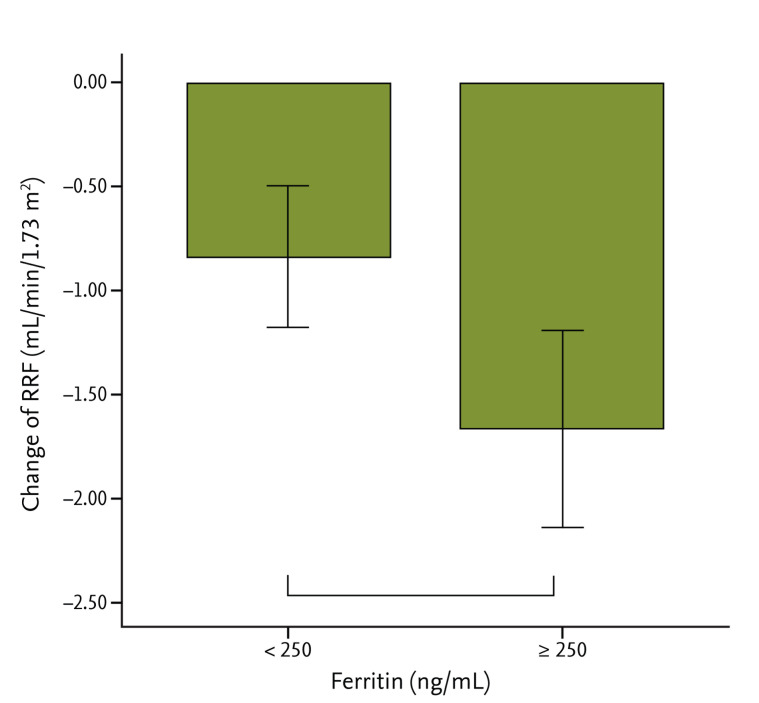
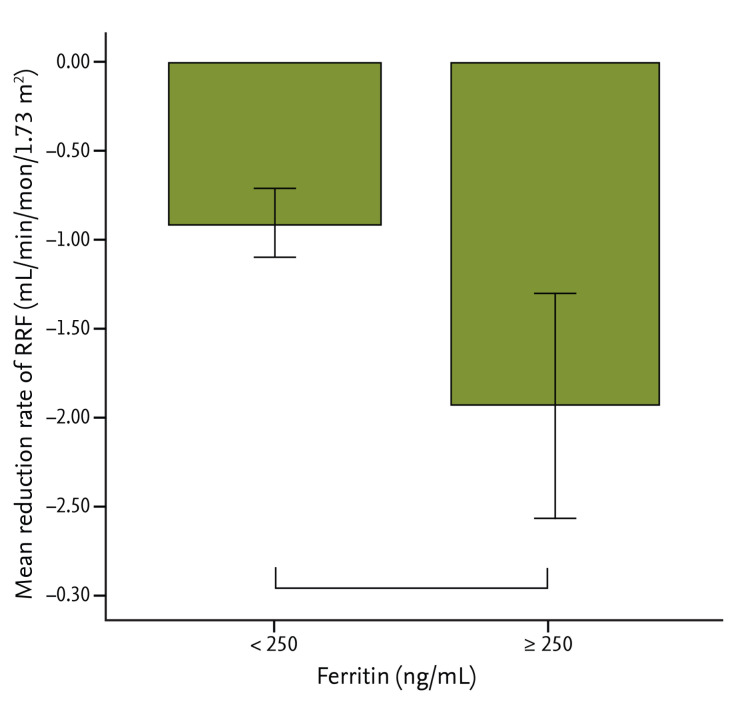
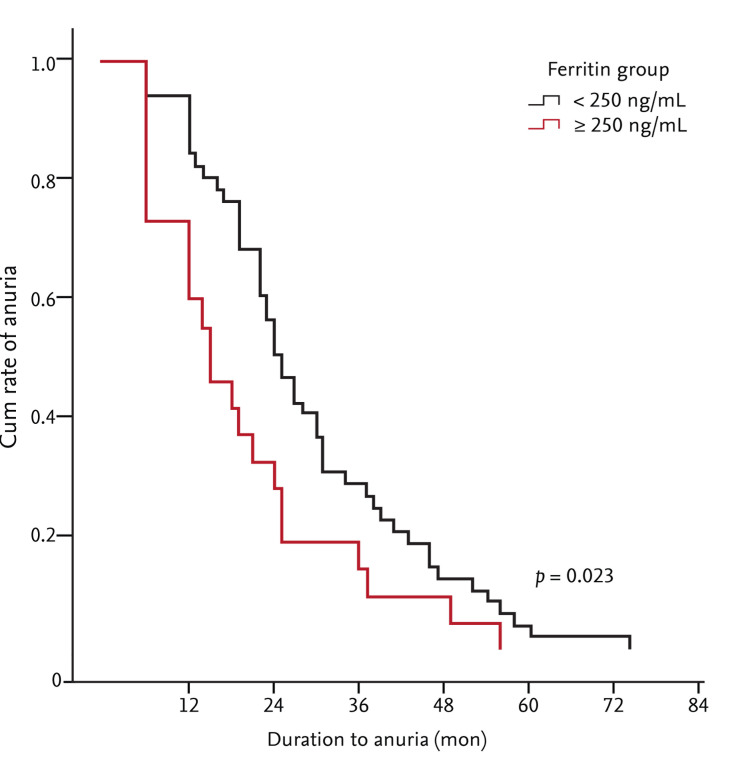
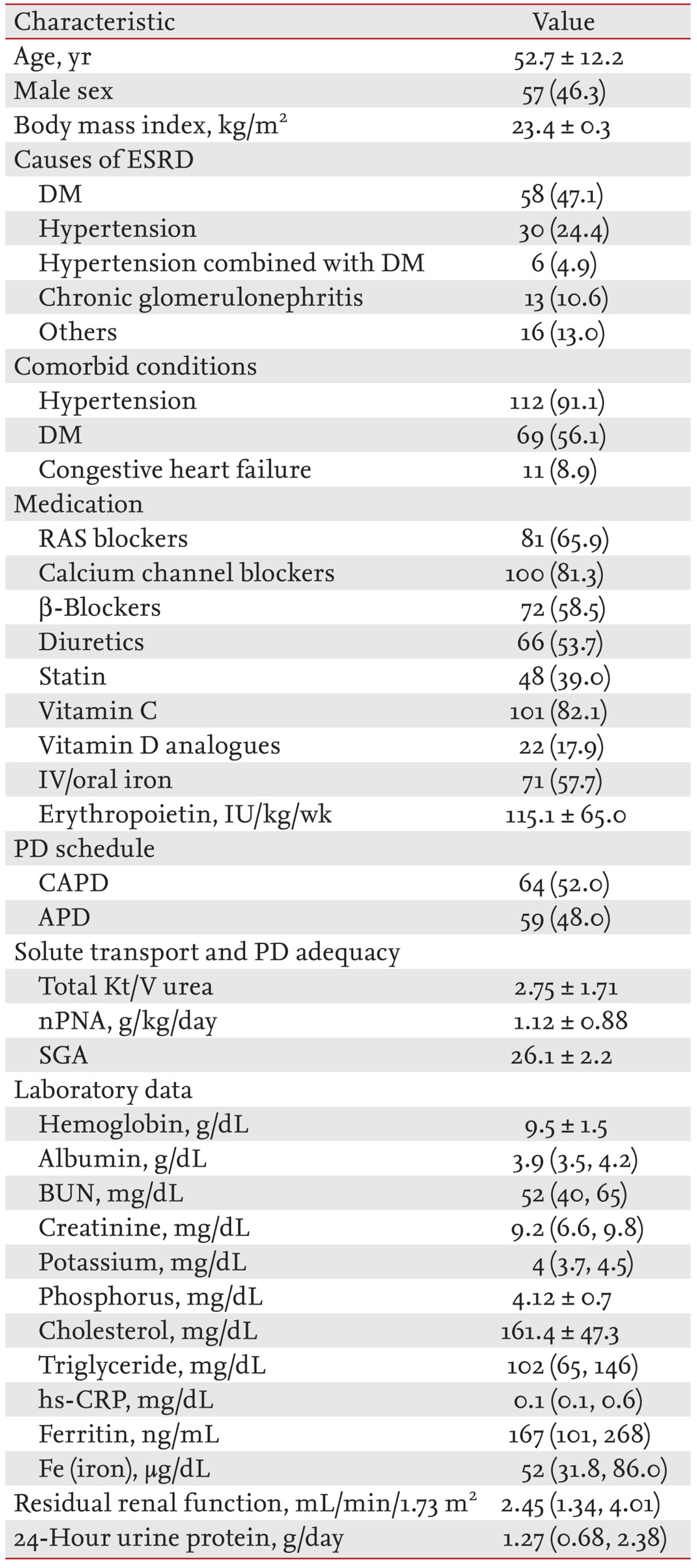
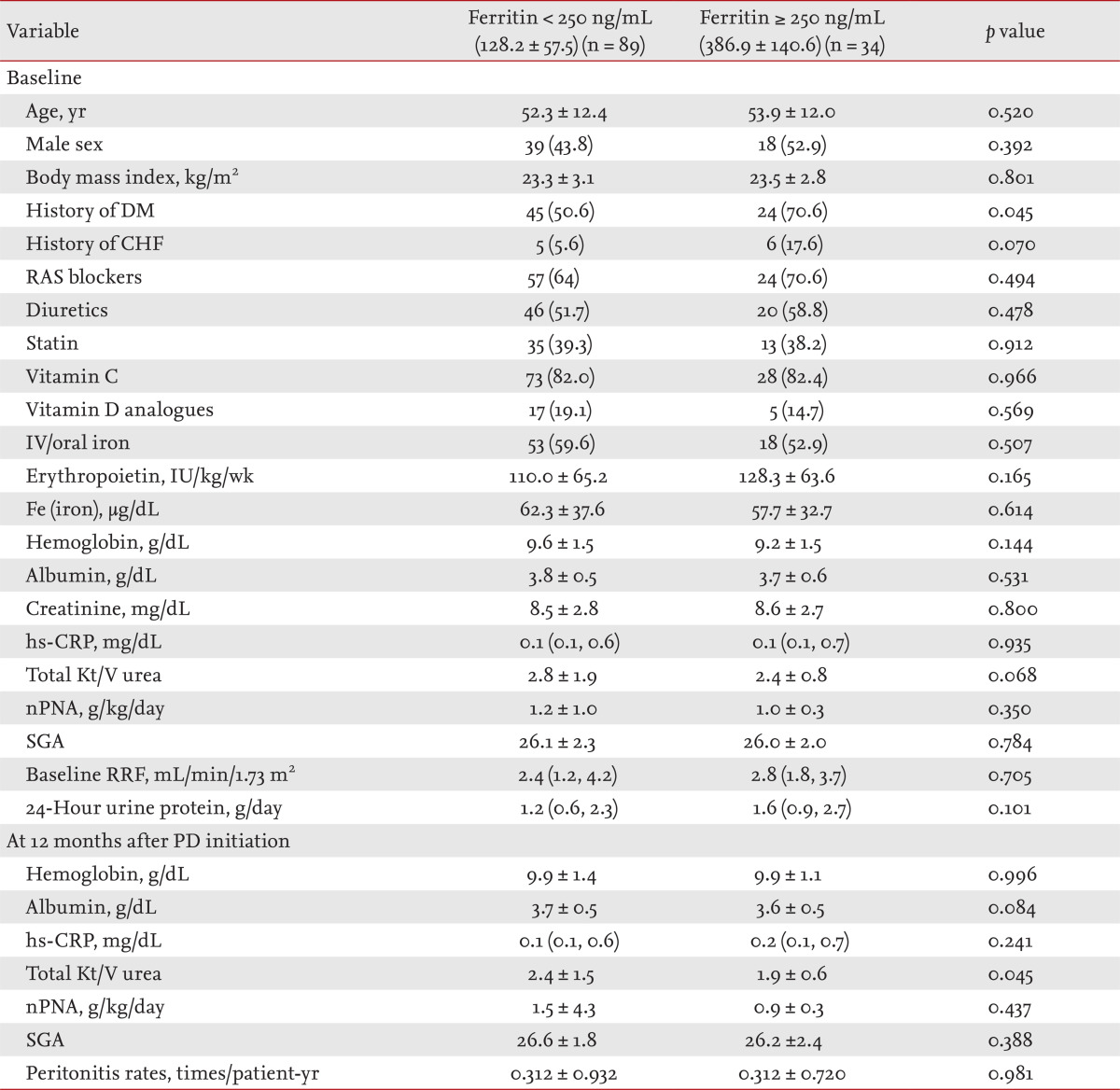



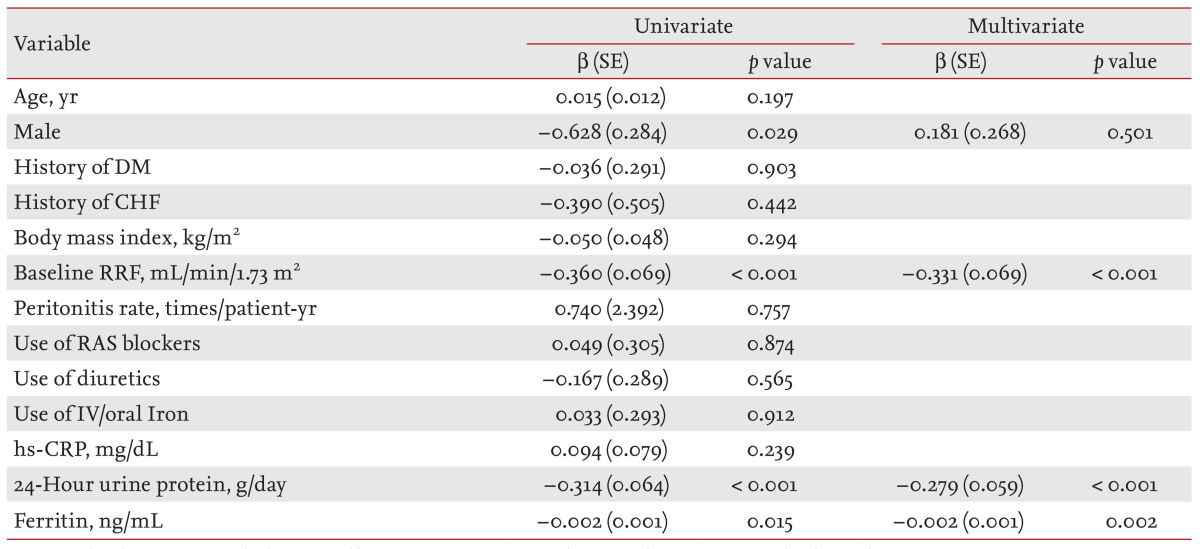
 PDF Links
PDF Links PubReader
PubReader ePub Link
ePub Link Full text via DOI
Full text via DOI Download Citation
Download Citation Print
Print



